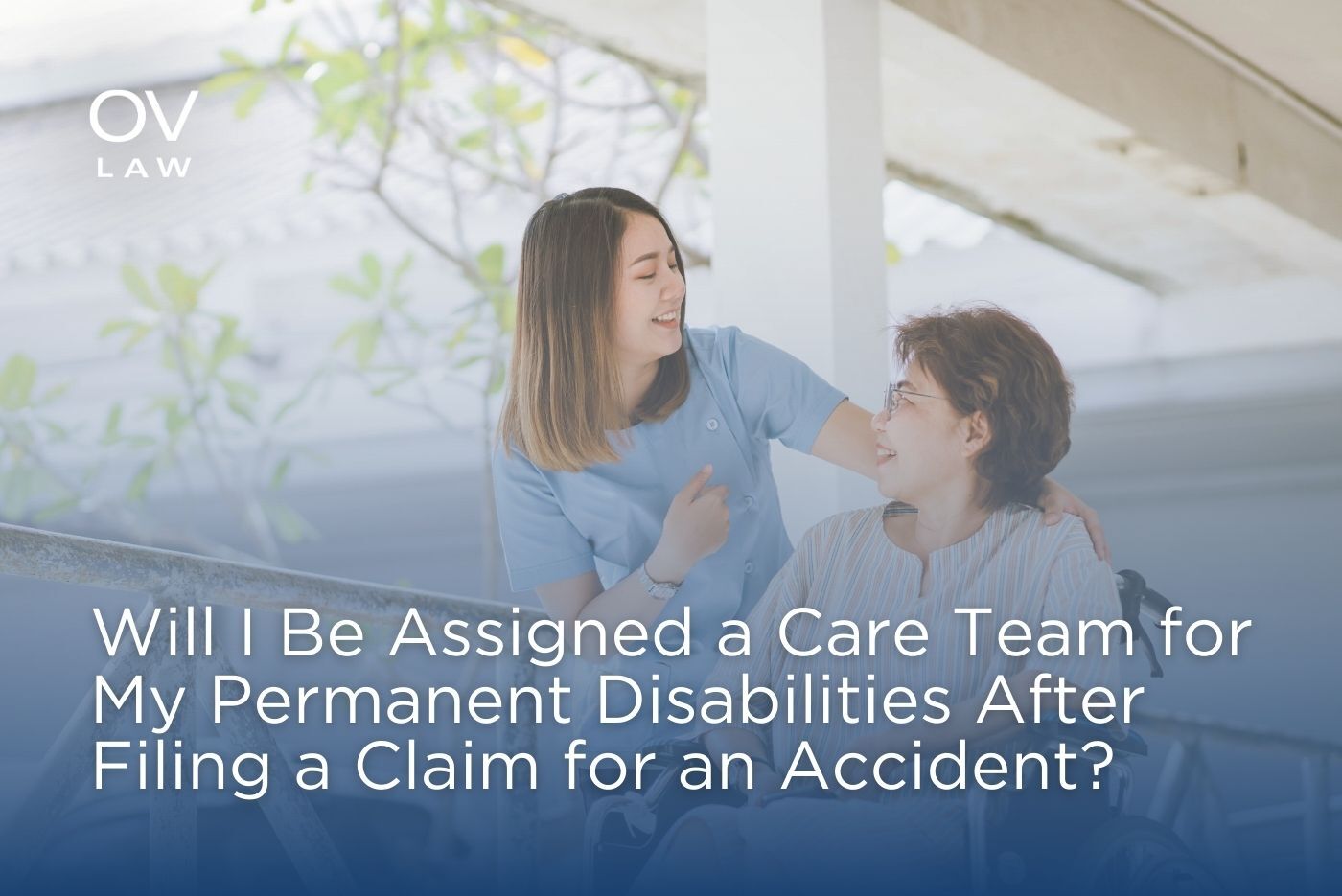Will I Be Assigned a Care Team for My Permanent Disabilities After Filing a Claim for an Accident?

If you or a loved one has suffered a serious injury in an accident, accessing the proper treatment is essential. A skilled, professional, and compassionate care team can ensure you get the right treatment to help you manage permanent disabilities, regain independence, manage pain, and adjust to life after an injury.
What is a care team?
A care team consists of healthcare and rehabilitation professionals who work together to support your recovery and daily function. Depending on the circumstances, this could include:
- An Occupational Therapist;
- Physiotherapist, Chiropractor or Massage Therapist;
- Personal Support Worker or Home Health Aide;
- Social Worker, Psychiatrist or Therapist; and
- Relevant Specialists.
In the case of complex injury, your care team may also include a Case Manager. Case Managers play a critical role in managing care and recovery. They can coordinate treatment and appointments, connect you with skilled practitioners, and communicate with your treatment team and insurance company.
Will a care team be assigned to me?
When you file a claim for an accident in Ontario, you will not be automatically assigned a care team. However, you can receive on-going support services through Ontario’s Accident Benefits system and potentially through a personal injury lawsuit.
When you are injured in a motor vehicle accident in Ontario, you are entitled to Statutory Accident Benefits, regardless of who was at fault. Through Accident Benefits, you may be eligible for medical and rehabilitation benefits, attendant care benefits, and in cases of catastrophic injury, case management services. These benefits can be used to cover the costs of treatment provided by your care team. However, your insurance company will not assign a specific treatment provider team to manage your rehabilitative care.
If you file a personal injury lawsuit against an at-fault party, you can also seek compensation for your past and future medical needs, including the services of a care team. However, one will not be appointed for you.
Accessing the proper care team
The logistics of finding the right treatment providers for your care team following an accident can be overwhelming. The team at Oatley Vigmond can help connect you with excellent care providers in your area, who can assess your injuries and ensure your care needs are being met. They can also fight to secure funding for your treatment, so you can focus on your health after a life changing accident.
If you or a loved one has been injured, contact Oatley Vigmond’s Personal Injury Lawyers to discuss your options.
Contributors

Fiona is dedicated to advocating for clients, helping them to recover just compensation after a personal injury. She is strongly committed to ensuring clients and their families feel heard and supported while navigating the legal system.
